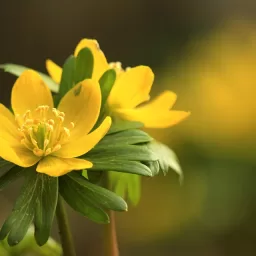If any of you sportsmen or women are even thinking about trying the sport of clam digging, you need to learn how to build a clam pump or you are in for a lot of work. Pumping clams with a clam pump is about a hundred times easier and faster than every other method that I have seen, all of which usually involve that archaic device known as a shovel. There is no need for such a dreaded tool when the clam pump is deployed! The clams I am talking about here are horsenecks, geoducks, washingtons, softshells, and that type of long necked clam.
The clam pump is a simple device and can be made easily in your garage at home with very little expense. All you need is a 30 inch piece of 3″ pvc pipe with a flat, glue-on, cap for one end of it for the body of the pump. Then you need a thirty inch long by ¼ inch rod that is threaded for about three inches on each end that will hold a handle on one end and round flat rubber washers, such as compressed tennis balls or pieces of rubber tire, on the other end that are somewhat tight against the inside of the pvc pipe to act as “plungers” to suck the water up with when you pull back on the rod handle at the top of the pump.
The body of the pump (the 3″ pvc) has a hole on the side about one inch below the cap to allow air and trapped water to exhaust when you pull up on the pump handle. The cap itself has a small hole in the center of it on the top of the pump so the sucker rod can be inserted through it. On the top of the sucker rod will be a piece of ¾ inch metal pipe perpendicular to the rod as the pump handle. This will be about 6 inches long with holes midway through both sides of the pipe to allow the sucker rod to pass through to allow it to be attached. Thread a nut on the sucker rod threads along with a washer to where the threads end. Put the rod through the handle piece and thread another washer, lock washer and nut on to squeeze the handle between them and the first nut and washer and tighten so that it is secure. L little “Lock-tight” would be helpful here and then cut off the excess threaded rod for safety.
The rubber washers are attached much the same way on the other end of the sucker rod, but make sure that you attach them before you insert them and the rod in the pump body as they will be up inside the pipe when the handle is attached after passing through the hole in the cap.
Lastly, you need a way to hold on to the pump body when you are pumping as holding the three inch pipe in your hand can be somewhat awkward. An easy fix for this is to attach a piece of ¾ inch flat bar across the center of the cap so that it hangs out a couple inches on each side of the pump. You will drill a hole in this just the same as you did the top of the cap as they will “line up” on top of each other and the sucker rod will pass through them both. This flat rod will be attached firmly to the cap before it is glued on with small nuts, washers, and bolts which will require holes being drilled in the flat bar to fit these. This also has the added benefit of protecting the plastic cap from being worn out quickly from the bar passing back and forth during the pumping.
Another good fix for the handle issue is to drill a small hole in the body of pump 6 to 10 inches from the top of the cap and insert a 5 inch bolt from the inside with a washer. Find or make either a metal or wooden handle so the bolt can go through the center of it and put a washer and nut on the outside of that handle to hold it in place.
Now, the fun part—-How to properly use this magnificent device! First, find the clam! Wait until the tide is well on its way out but about 45 minutes before ebb tide. This is because the clam pump uses water to blow its way down to the clam, not to suck the mud out, so you need to have a few inches of water over the mud flat where you are clamming. Walk along and when you think you see the clam’s mouth sticking up, which is usually just a small oddity in the sand or maybe the two “nostrils” showing, shove you finger in the hole. If it is a clam, you will feel a somewhat slimy creature immediately withdraw down into the hole away from your finger. Put the pump bottom over the hole and suck up the water and quickly blow it out into the sand and mud. Do not push down on the pump, if anything, hold it up from the sand a little. Your pump will sink several inches. Repeat this until you feel the clam’s hard shell with the pump body. You reach down the hole and feel for the clam as well as all around as many times 2 or 3 can be taken from one hole. Sometimes, once you get the hang of it, you can hold the pump up and pump rapidly with one last big “suck” and spit the clam out in front of you. You may still have to feel for it or wait for the water to clear as you move to the next one as the water is too muddy from all the pumping to see it lying in front of you.
You will have your limit in just minutes, while you will see the shovel brigades out there forever working their you-know-whats off! Be prepared to explain how you built that magic tool as these folks will surely be questioning you on one of their many rest breaks.
Now for the clam chowder, clam strips, and raw clams with lime and wasabi! Hold on!!!, You have to clean them. This takes longer than the pumping but goes quick with a few jokes, beer, passing gas, or whatever your mode of cheap entertainment is.
To clean a clam, there are basically two parts. By that I mean the body and the neck. First, you get the body out of the shell by sliding your sharp knife along the shell on the inside of both halves of the clam to cut the “scallop” muscle that attaches the clam to the shell. Then remove the neck from the body where the rough “skin” of the neck begins. Dip the neck in nearly boiling water for just a few seconds to scald it. Then, peel the brown skin from the neck and any remnants from the body to expose the snow white meat. Cut the neck nearly in half for its full length and rinse it all well to avoid that “gritty” feel in your mouth when chewing. This is simple, but when you have 50 or 100 clams in front of you and everyone scatters to beaches and outhouses to avoid the work, it takes some time! Clam away!
BY by GAHZLY
El Sewedy wire prices 2022
#Build #Clam #Pump #Sport #Clamming



